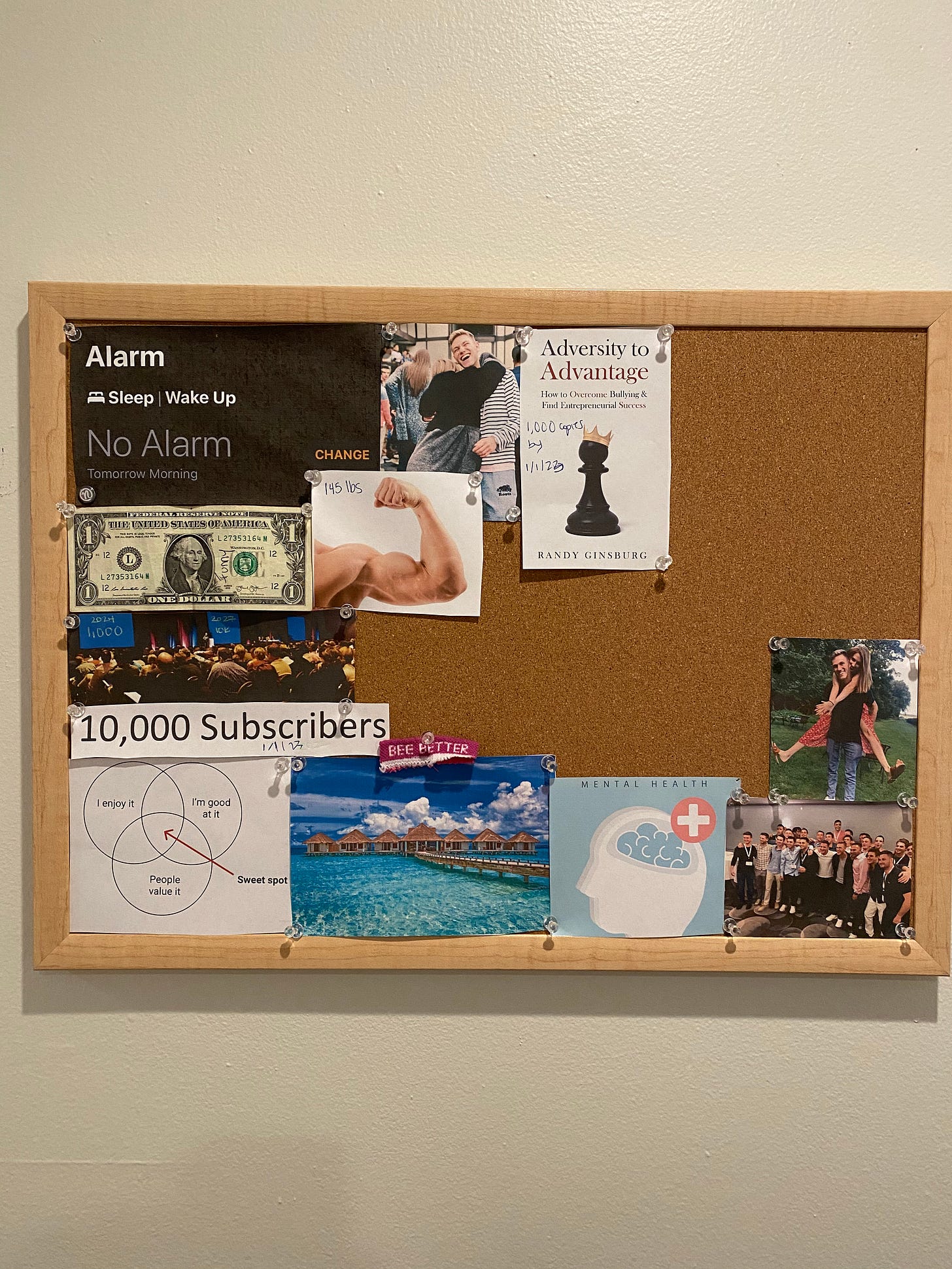The K(no)w Board
What do Cardi B, Steve Harvey, Oprah, and Jim Carrey have in common? They’ve all credited the practice of vision boarding with helping them realize their dreams.
A vision board is a collection of photos and artifacts (often housed on a poster or bulletin board) that represent your boldest dreams. Referencing this board daily follows the law of attraction which states that positive or negative thoughts bring positive or negative experiences into reality. If this sounds cheesy to you, it did to me too. I encourage you to keep reading.
“So a vision board? It’s like selling our own ideas to ourselves” - Lucinda Cross
Since speaking openly about vision boarding in my book and on various podcasts, I’ve had a handful of people reach out to me amazed that this idea actually works.
Here’s one of my favorite emails from the host of a podcast I appeared on (who’s now a friend and Crashing Up subscriber) about his experience with vision boarding.
This is great, but I want to clarify something here. A lot of the manifestation related content on the internet is complete bullshit. Visualization is a small piece of the complex puzzle of mindfulness and can play a role in success, but it alone will not get you there. To have any chance of achieving ambitious goals, you need to put in consistent work. This is something the sender of this email has done for the year and a half I’ve known him.
After experimenting with vision boarding for the last few years, I still wasn’t fully sold on the idea. I noticed that everything on my board was related to my professional career. By this account, my professional career and my identity were tied together. Instead, I wanted to design a vision board for my life. Something that outlined my values, my personal and professional dreams, while also serving as a helpful tool for decision making down the line. So, I created the K(no)w Board.
The K(no)w Board is built around two principles:
Clear, quantitative goal setting
The ability to say “no”
Goal Setting
Hazy goals lead to hazy results. Many of the goals we set are general and qualitative, lacking clarity and leaving significant room for uncertainty. Goals that get achieved more frequently are specific and quantitative, centered around an exact point in time.
Bad Goal: I want more newsletter subscribers
Good Goal: I want to reach 10,000 subscribers by 1/1/2023
By adding metrics and dates to my goals when applicable, I know exactly what I’m working towards. I’m also able to use the data around my performance to help set better goals in the future.
Saying No
One of my favorite entrepreneurs, Derek Sivers once said,
“If it isn’t a hell yes, it’s a no.”
I don’t have time for anything that doesn’t contribute towards at least one of the goals or values that I list on my board. Operating with this mindset helps alleviate some of the stress of decision making, freeing up my time and mental capacity to tackle what really matters to me.
Here’s a picture of my own K(no)w Board. As you can see, it consists of pictures of friends, loved ones, a dollar bill, goals for newsletter subscribers and speaking audiences, vacation destinations and more. I’ve also left some empty space for new ideas and goals, or shifts in values.
I encourage you to test out this activity for yourself and measure your progress. I’d be honored if you shared your results with me. I’m always accessible at my email randy@randymginsburg.com.





